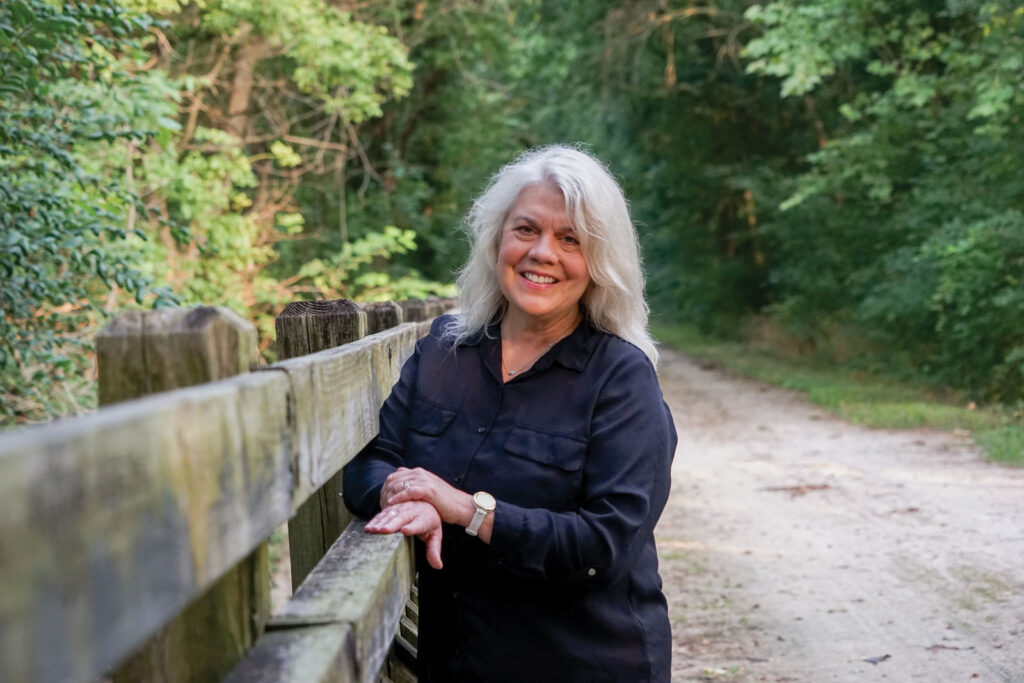Thanks to the Design for Conservation, Missouri harvests $15 billion a year from conservation programs.
Next time you spy the sudden, nervous glance of a white-tailed deer, hear a turkey gobble in the distance, smell a leaf-covered forest floor or, if you’re in southeast Missouri and you hear the plaintive bugle of an elk, think about the Tiger.
Not a Mizzou Tiger and not a real black-and-orange striped tiger; but the Tiger Hotel in downtown Columbia. In many ways, that’s where Missouri’s conservation story started, eventually adding chapter upon chapter to the legacy of fish and wildlife management that other states have used as a template for their own conservation efforts.
In Missouri, the broad umbrella of conservation and the many years in the making of networks and partnerships among state agencies and nonprofit organizations has resulted in an estimated $15 billion a year boost to the Show-Me State’s economy, supporting or accounting for as many as 100,000 jobs, says Columbia native Sara Parker Pauley, a 1983 graduate of Hickman High School and, since 2016, the director of the Missouri Department of Conservation. Pauley says deer hunting alone contributes roughly $1 billion dollars in economic activity for the state.
Now in its 85th year, the department traces its strong roots to 23 S. Eighth Street, the site of the iconic Tiger Hotel. The date of inception was Sept. 10, 1935, when a group of sportsmen, hunters, and anglers from around the state — along with representatives of garden clubs and other nongame outdoor groups — met at The Tiger, determined to find a way to get politics out of fish and wildlife management, and put an end to over-hunting and unregulated timber harvesting.
“We had wreaked havoc” on the environment and on the creatures that depended on that habitat, Pauley explains.
That focused meeting led to the creation of the Conservation Federation of Missouri (CFM), which quickly got the ball rolling to put Proposition 4 to a vote of the people. Specifically, Amendment 4, with the motto “Bring ‘Em Back to MO,” sought to create a politically independent Conservation Commission to oversee management of the state’s wildlife, fish, and flora resources.
The campaign for conservation was based on the premise that science and data — not politically-motived or politically-appointed leaders — was the best way to maintain and regulate hunting and fishing.
“They understood that it would work for everyone” who enjoyed nature and the outdoors, Pauley recalls.
Prop 4 passed, the Conservation Commission was born, and in 1936, with the CFM trumpeting the cause, the Department of Conservation came into being under the commission’s authority.
Years later, just as the diverse contingent of outdoor-related and even urban interests were involved in the genesis of the Conservation Commission, those voices were just as vital for passage of the one-eighth of 1 percent sales tax for conservation in 1977.
The sales tax, which generated $148 million in 2022 to help fund conservation programs, was part of the Design for Conservation plan that spelled out the need for and proposed use of sales tax revenue. The plan called for nature centers, habitat restoration and protection, and sundry other purposes. Pauley says other state fish and game agencies have patterned their conservation and protection systems after Missouri’s design.
The one-eighth of one percent conservation sales tax gives the Missouri Department of Conservation one penny for every eight dollars spent on taxable goods and services. For fiscal year 2022, the tax amounted to $148.43 million. Five years earlier for FY 2017, the sales tax produced $117.1 million.
Before the sales tax went into effect in 1977 — with 71 percent voter approval — the department’s primary source of revenue was the sale of hunting, fishing, and trapping permits. The permit revenue is still an important source of funding, generating $41.2 million in FY 2022, up from $33.3 million five years earlier. MDC is not supported by any other city, state, or county taxes.

“Nature is imperative for human existence,” Pauley adds, her tone becoming more emphatic when it comes to connecting people with nature and the outdoors. Hunters and anglers have been and are still key figures in the overall scope of conservation and management, she says, “But it’s always been about the broader public” and “as we become more and more urbanized, they are disconnected in many ways from nature. There are ramifications for that.”
Deer hunting, turkey hunting, fishing, and now bear and elk hunting are among the litany of species and programs the department manages. Connected to those activities are hotels, restaurants, grocery stores, tackle shops, and sporting goods stores. The same economic picture is true for nongame nature lovers, evidenced by some of the nearly 1,000 Conservation Areas receiving as many as 300,000 visitors each year.
“Where do they go to get their gear; their lunch or dinner?” Pauley asks. “There is no doubt that natural resources is a big business in this state.”
That big business faces multiple threats and challenges, including invasive plant and animal species — honeysuckle, for starters, which displaces native plants that important pollinators use for food — an uptick in animal diseases, including white-nose syndrome among bats and chronic wasting disease among deer, the population surge of Asian carp that can outcompete native fish and other aquatic life for food, and myriad other concerns. But one of the most regular challenges comes not from plants or animals, but from a building four miles east of the MDC headquarters in Jefferson City — the State Capitol.
Two years ago, the state legislature, opposed to the department’s planned purchase of 510 acres of native prairie land in St. Clair County, attempted to gain control of the Conservation Commission’s spending authority. The commission sued the legislature and the battle lingered for 18 months. In June, 601 days after the battle started, the Missouri Supreme Court narrowly sided with the commission on a 4-3 decision that confirmed it was the commission, not the legislature, that had authority over the department’s budget.
Before responding to the commission’s reaction to the high court’s ruling, Pauley reaches for The First 50 Years, the history book of Missouri’s successful conservation story. She reiterates the importance of keeping conservation separate from politics, stressing that the amendment that created the commission and the MDC did not grant the legislature authority over the commission.
Noting the formation of the CFM in 1936 and the MDC in 1937, Pauley notes that the first legislative challenge to the commission and department’s autonomy happened in 1938.
“It is a struggle — always has been,” Pauley says, pointing to the book in her hands. “According to the people, it is up to the commission to determine how those dollars are spent.”
She characterizes the ongoing tension between the legislature and the commission as “healthy,” adding, “We have a lot of strong supporters in the legislature.”
The department’s budget attempts to fund comprehensive outdoor recreation opportunities across the state via rock climbing, equestrian use, wildlife viewing and birdwatching, and providing e-bikes in some Conservation Areas. Other programs aim to restore native prairie habitat, which once covered 15 million acres of Missouri land. Now, less than one-half of 1 percent of native prairie remains.
The loss of grassland has had a domino effect on ecosystems, from the decline of pollinators to the astounding loss of birds — as many as three billion — Pauley says, adding that across the country, 12,000 species are considered “in decline.” Eight hundred of those species are in Missouri.
“We’ve got species in trouble,” she explains, noting that MDC now focuses more on habitats and suites of species and aquatic systems rather than just individual species.
These days, partnerships are paramount in achieving the department’s goals and initiatives. One example is a partnership with the Missouri Prairie Foundation and the Missouri Department of Transportation (MoDOT) to eradicate invasive plants on Missouri’s roadsides and restoring native plants. MDC is also working with the Prairie Foundation and Missouri State University in Springfield to protect and restore the regal fritillary butterfly population. The important prairie pollinator feeds only on prairie violets.
Another still-new partnership is the Boone County Nature School, a collaboration with Columbia Public Schools, the city of Columbia, and all six Boone County school districts. The estimated $6 million project is located on a 111-acre campus in the Three Creeks Conservation Area off Tom Bass Road south of Columbia. The land was donated by Hank Waters and Vicki Russell.
When completed, the campus will feature a sustainably designed nature school building, an outdoor pavilion, restored native habitats and native crops, a fishing pond, and access to trails that lead to a landscape of streams, caves, and sinkholes. Nearly 11,000 students will have access to the unique school each year. As fundraising continues to fully develop the property, the nature school served more than 7,000 youth last year with hiking, archery, canoeing, kayaking, and overnight camping.
For Pauley and the cause of conservation, protecting wild species and habitats has intangible benefits of just being outdoors, enjoying a wide-open space of fresh air, or connecting with nature in an innate if not spiritual manner. But the outcomes are also “very tangible,” she says.
Pauley freely concedes that her impassioned treatise might sound existential, but she doesn’t temper her convictions.
“Our mission has never been more important,” she adds. “When we have healthy, thriving ecosystems, what does that do for water quality — for human health and well-being? We are all interconnected.”
Total State of Missouri operating budget for fiscal year 2022: $34,128,498
Missouri Department of Conservation represents less than one percent of the budget and receives no state general revenue.
MDC FY22 Revenue
Conservation Sales Tax: $148,432,999
Permit Sales: $41,185,759
Federal Reimbursements: $35,330,861
Sales and Rentals: $7,896,832
Other Sources: $4,437,503
Interest: $521,710
MDC FY222 Expenses
Habitat Management: $44,298,434
Conservation Business Services: $43,299,232
Fish and Wildlife Management: $40,904,071
Recreation Management: $22,850,521
Education and Communication: $22,637,724
Capital Improvements: $12,208,679
Staff Development and Benefits: $6,999,488
County Assistance Payments: $5,747,850
Land Conservation & Partnerships: $2,365,170










